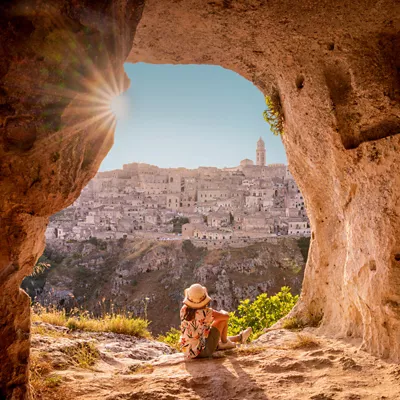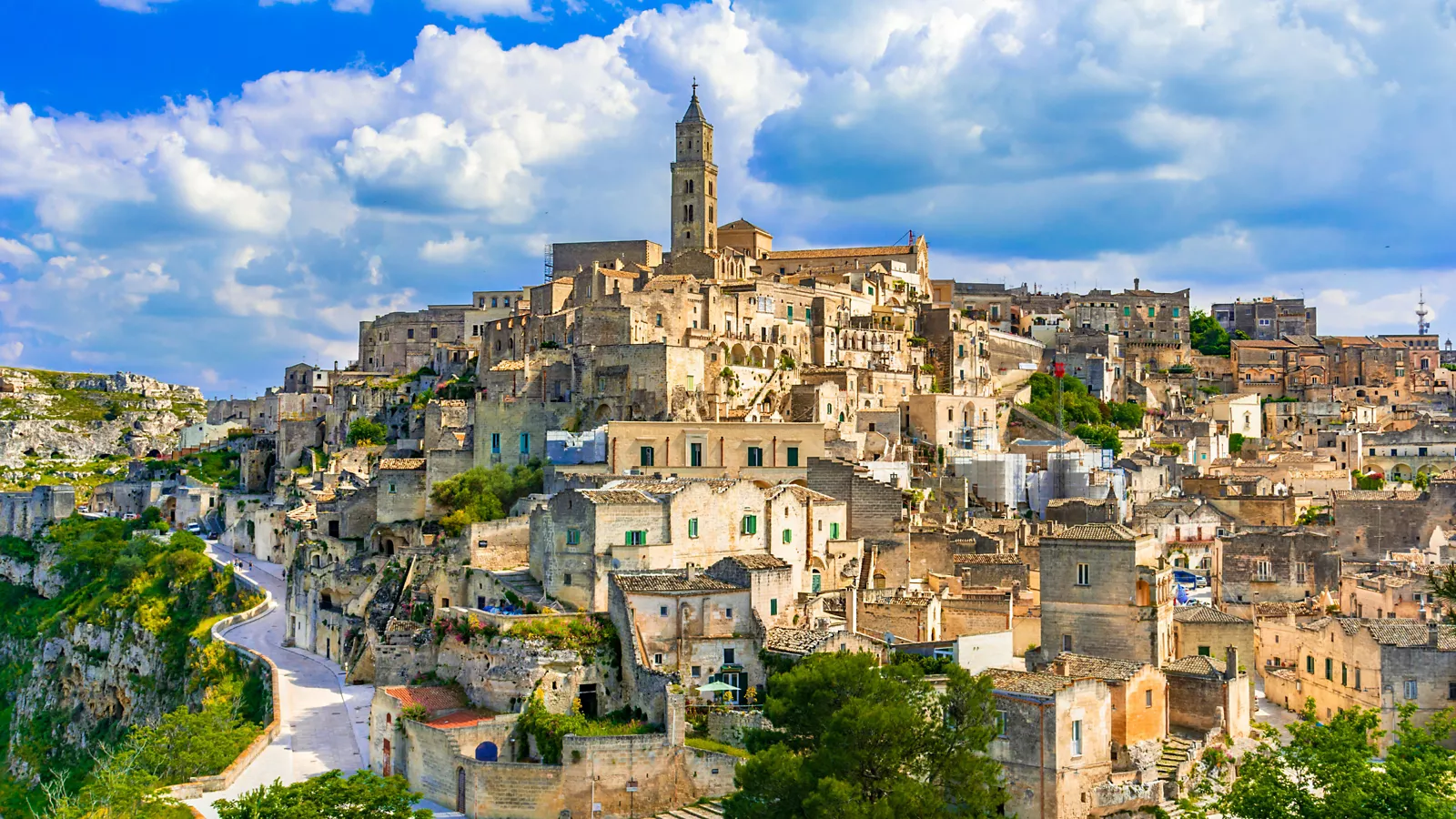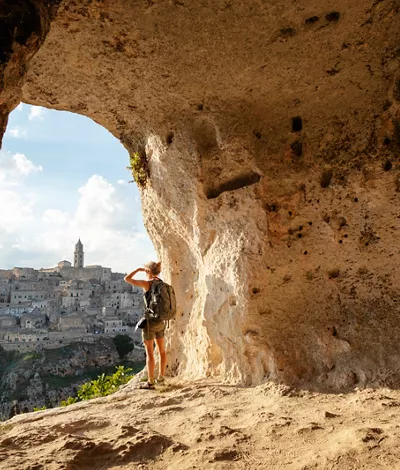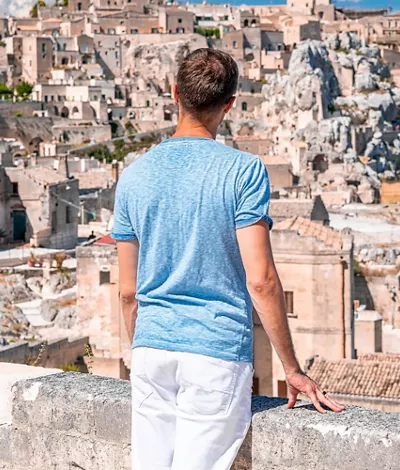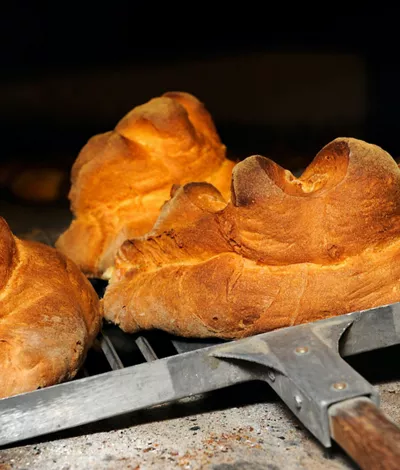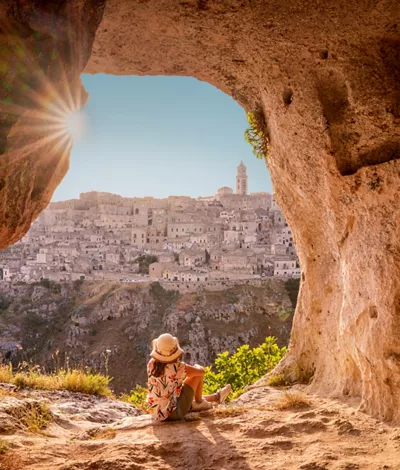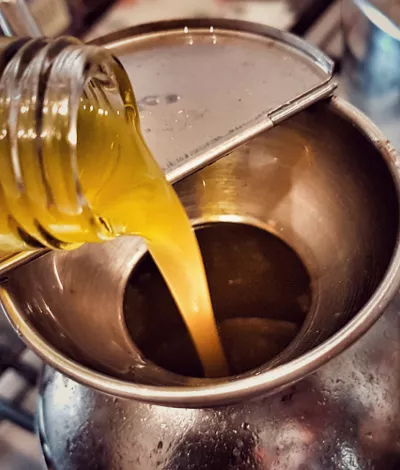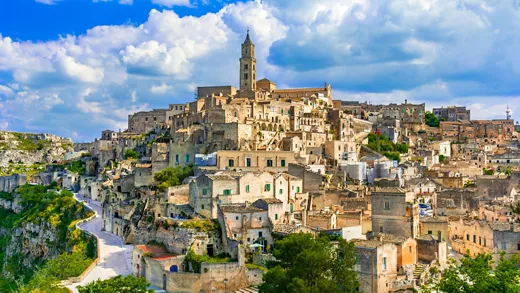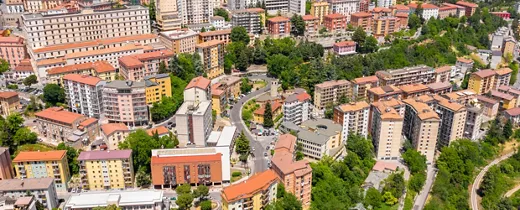One of the oldest cities in the world, nature, history and culture come together in Matera
A place rich in scenery, unique architectural works, views of incomparable charm, Matera has captivated many artists, including Carlo Levi and Giovanni Pascoli, and continues to enchant with its Sassi, a World Heritage Site. Worthy of a long visit, it enraptures the heart.
What to see in Matera and surroundings
The wonderful UNESCO World Heritage site Sassi of Matera
Matera is the city of the Sassi, the stones of Matera, a unique area that holds evidence of human settlements from the Palaeolithic to the present day. A history spanning thousands of years, many attractions, a rich and delicious cuisine of poor origin: the pearl of Basilicata, it deserves to be seen at least once in a lifetime.
